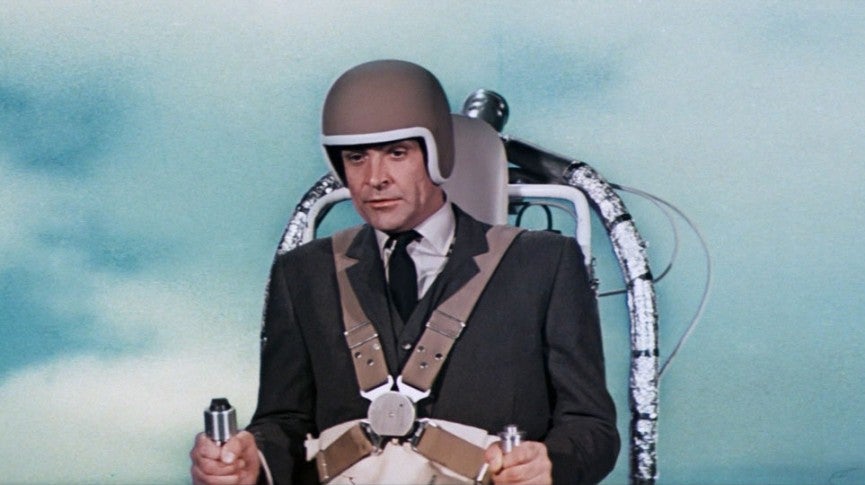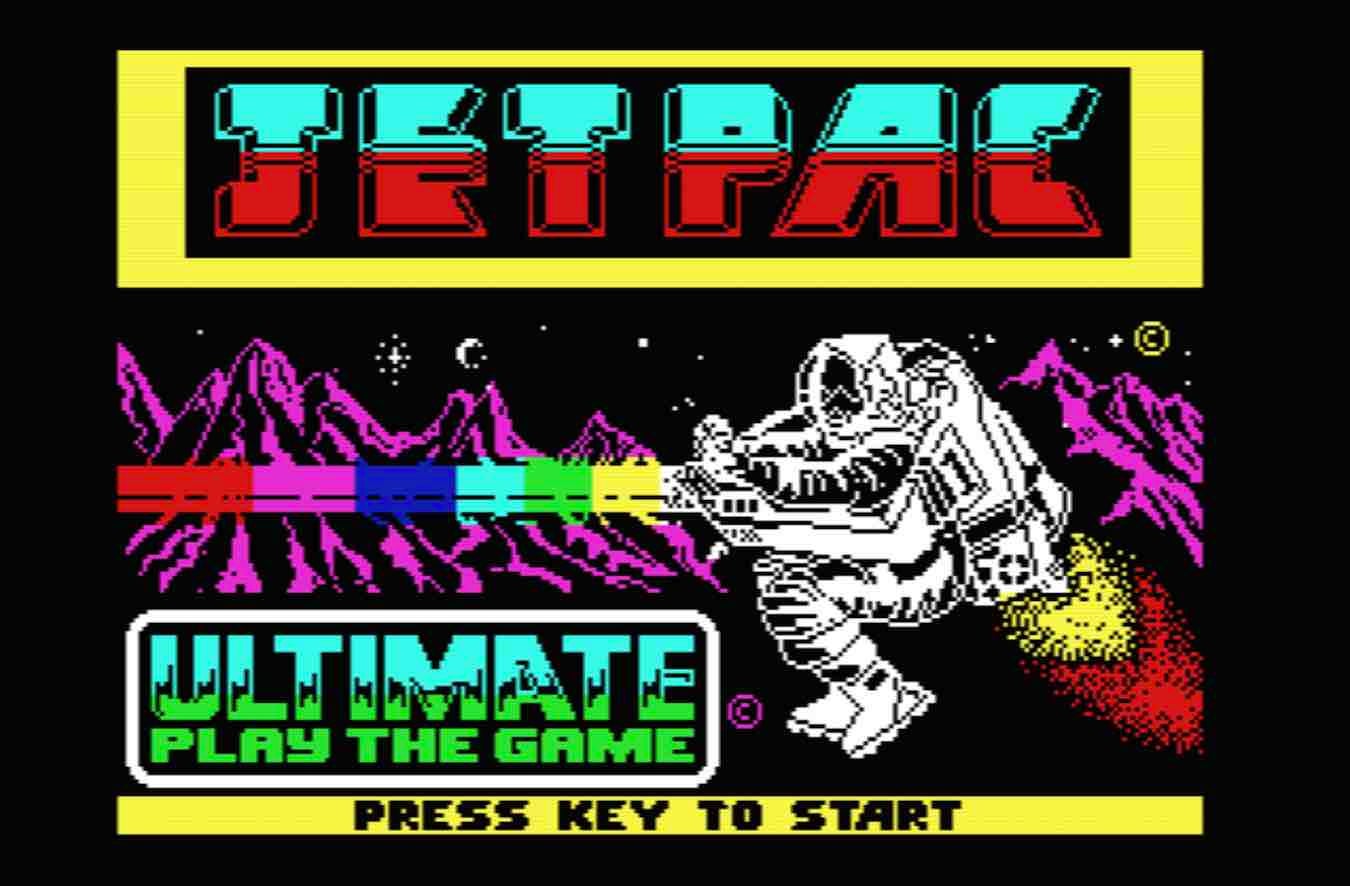As modes of transport go, jetpacks are often more about pluck than precision. In Exile you are engaged in a constant push-pull with unhelpful gas geysers, explosive shockwaves and the invisible tug of Phoebus gravity. But rocketing around at high speed in low-roofed caverns chimes perfectly with a game that asks you to jump headfirst into the unknown and apply seat-of-the-pants problem-solving. Exile’s rocket-powered emergent slapstick makes me smile the same way I do when seeing a jelly start to wobble: precariousness as pleasure. It is undoubtedly my second-favourite video game jetpack. (In keeping with the subject matter, please strap in and allow me to loop around in some discursive aerobatics before revealing my actual favourite.) It is a boost universally acknowledged, then: jetpacks rule. They have ruled since the early 20th century, when they first propelled space cowboys like Buck Rogers into high adventure via lowbrow pulp novels and comic strips. For decades these portable domesticated explosions were sleek symbols of a seemingly imminent tech-assisted future, gleaming pointers toward a world where humanity would be free to blast off at will into the Y-axis while flicking V-signs at boring old gravity. But it has now been six decades since the US Army helped fund the invention of the Bell Rocket Belt, that spindly, silvery bodge of tubes, nozzles and jet fuel that could gift an infantryman air superiority (for up to 20 glorious seconds). You may have seen one in Thunderball - where it helps 007 make a not-so-quick escape - or in vintage clips of the opening ceremony of the 1984 LA Olympics. Since those brief cameos, the real-life technology seems to have stalled. Jetpacks have acquired a different meaning, redeployed as sarcastic shorthand for stymied utopia. (As the excellent Scottish indie band has it: We Were Promised Jetpacks!) Thankfully games have held up their end of the bargain, nurturing an environment where jetpacks have not just survived but thrived. The wonderful Exile may have been a notable trailblazer but gaming’s long love affair with lashing a volatile fuel source to your back and then setting it gleefully on fire goes all the way back to 1983, when Ultimate Play the Game released their first ZX Spectrum title: Jetpac. This masterpiece of single-screen mayhem tasks your stressed astronaut with reassembling a rocket ship and recovering vital fuel using a combination of carefully-timed boosts and strobing laser fire amid a constant barrage of cosmic debris. It was - and is - tremendous fun, a perfect example of what a good jetpack could bring to the gaming table at a time when being able to change direction mid-jump was by no means guaranteed. Look at the nearly four decades of gaming since Ultimate’s frazzled collect-em-up and you can see jetpacks deployed in various ways, from the boilerplate to the inspired. There are games that seem to be built from jetpack up, like the whizzy FPS combat of storied franchise Tribes and the scooting, scouting and hovering boosts of your rookie pilot in Titanfall 2. Games like these invite you to reimagine how to navigate the 3D space around you, then demand you do it under heavy laser-cannon fire. In 2010, Dark Void tried to inject the then-fashionable heavy-footed skirmishing of Gears of War with some aerial pizazz. Capcom’s self-styled “vertical cover shooter” strapped players into a chunky retro rocket-pack to overcome a rampaging alien invasion in the 1930s. Even if failed to set the world alight, Dark Void did successfully evoke some of the derring-do of The Rocketeer comic strip and movie. It belongs in the same continuum as Rocket Ranger, one of Cinemaware’s lavish (if gameplay-lite) 16-bit titles that was equally in thrall to pulpy retro serials like King of the Rocket Men. For years jetpacks have been adding valuable toots of added aerial manoeuvrability to dozens of third-person games, from Mass Effect: Andromeda to PS5 bullet-hell alien safari Returnal and even Fortnite (during those periods when they have been boosted from the vault). But even when they just seem to be sprinkled in as a cool, limited-use add-on I still always get a little charge when activating a jetpack. My theory? The sound effect is usually some variation of a fire extinguisher blast. And after years of walking past stern For Emergency Use Only signs, there is an illicit thrill in imagining letting off a fire extinguisher just for kicks. What have I missed? The cartoony slickness of addictive endless runner Jetpack Joyride, where your pack is both transport and weapon. The abrupt, insectoid leaps of the Jet Trooper in the first brace of Star Wars Battlefront games. The cute but annoyingly chatty FLUDD from Super Mario Sunshine - because of course a plumber’s preferred jetpack would be powered by water - and all those extra traversal options it gifts you. All strong contenders. But for me the best video game jetpack is the one squirrelled away in the wasteland outside Las Venturas, requiring you to infiltrate a top secret military facility to recover it. It is only a relatively minor element in the swaggering, boisterous sprawl of Grand Theft Auto: San Andreas but after hours barrelling around clamorous cities with hip-hop blaring over bursts of machine-gun fire, your first forays in the (radio-less) jetpack can create a very different mood. As you glide over desolately beautiful desert, CJ’s skinny legs dangle and almost imperceptibly react to every minor course correction, the only sound the back-of-the-throat susurration of your stability thrusters. It is a vertical slice of GTA at its quietest and most poetic, reviving that outmoded utopian fantasy that jetpacks used to represent: spirit-lifting serenity and, ultimately, escape.


